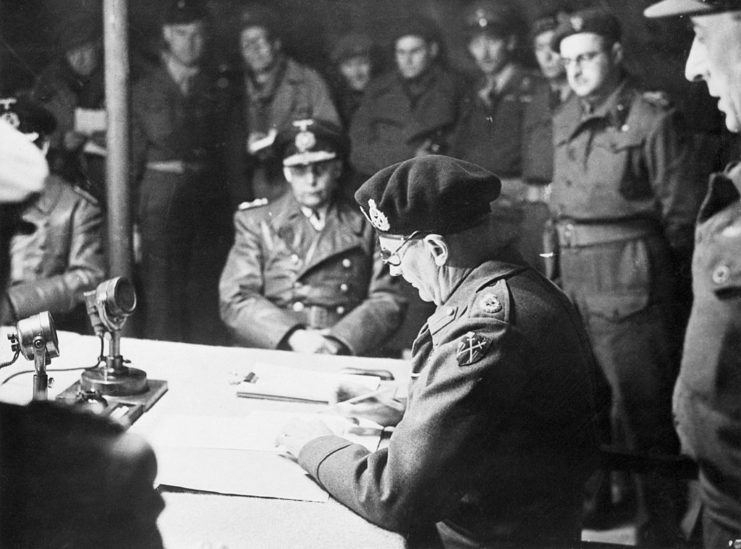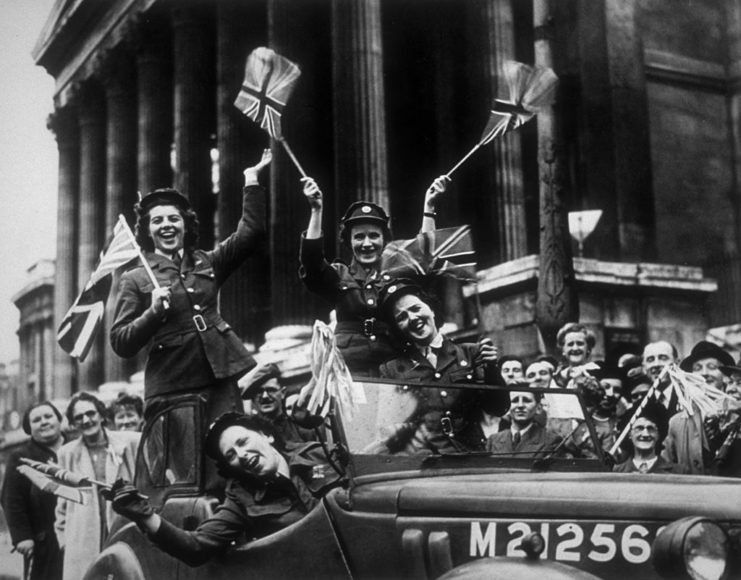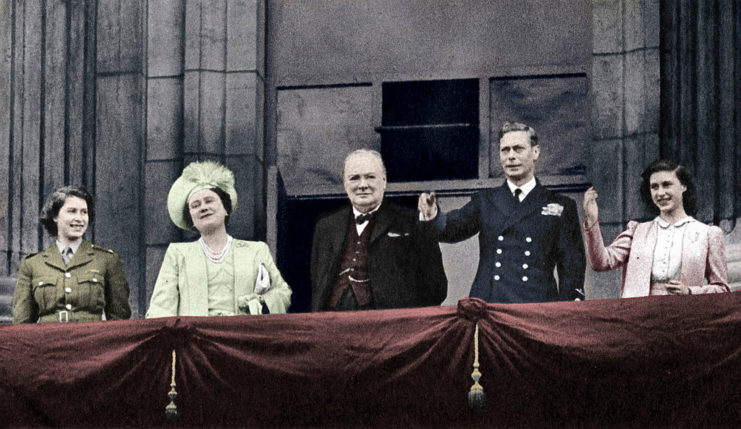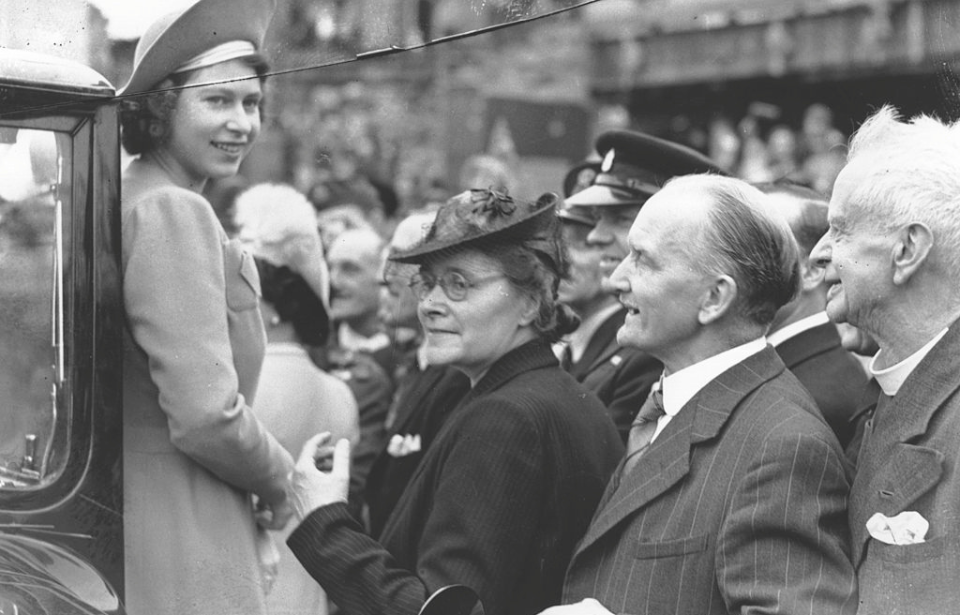Britain’s longest-ruling monarch, Queen Elizabeth II, passed away on September 8, 2022 at the age of 96. The news was shared by Buckingham Palace, which used the Royal Family’s official Twitter account to reveal she’d died peacefully at Balmoral Castle, her estate in Aberdeenshire, Scotland.
Elizabeth II’s death has people looking back on her life, particularly her service during the Second World War and her ascension to the throne just seven years later. While it’s widely known she served with the Auxiliary Territorial Service (ATS) during the latter part of World War II, what many aren’t aware of is that she and her sister, Princess Margaret, snuck out of Buckingham Palace to join in the celebrations on V-E Day – AKA, Victory in Europe Day.
Germany signs its unconditional surrender

The German surrender came following negotiations between the Allied forces and Grand Adm. Karl Dönitz. The German leader’s aim was to save as many citizens as possible from falling under the control of the Soviet Union, whose forces were making continued progress in the East.
A delegation arrived at British Field Marshal Bernard Montgomery‘s headquarters in Lüneburg Heath on May 5, 1945, where the senior British Army officer accepted the unconditional German surrender in the Netherlands, Denmark and northwest Germany. This was followed on May 7 with Supreme Allied Commander Gen. Dwight D. Eisenhower accepting the unconditional surrender of all German forces. The document, signed by Gen. Alfred Jodl, came into effect the following day.
That same day, May 8, a further document was signed in Berlin, at the behest of Soviet leader Joseph Stalin. While this signaled the end of the war in Europe, it didn’t mean the conflict was over. The US and Japan were still fighting in the Pacific, and the Japanese wouldn’t surrender until a few months later. Emperor Hirohito announced the country’s surrender on August 15, with the document officially signed on September 2, 1945.
V-E Day Celebrations

Word of Germany’s surrender was announced to the British public via radio late in the day on May 7, 1945. The BBC interrupted its regularly scheduled programming to announce that the following day would be a national holiday, and newspapers printed special editions sharing the news.
On May 8, 1945, both King George VI and British Prime Minister Winston Churchill addressed the Commonwealth. Churchill warned that the fight wasn’t over, referencing the ongoing war in the Pacific, while George VI applauded his people’s endurance. He also called for lasting peace, saying, “Together we shall all face the future with strong resolve and prove that our reserves of will-power and vitality are inexhaustible.”
While the formal celebrations occurred on May 8 – V-E Day – many began partying the evening before. Bonfires were lit, pubs were filled to the brim with patrons and people danced long into the night. The following morning, Churchill confirmed with the Ministry of Food that there was enough beer in London to fuel the celebrations, while the Board of Trade announced people could purchase white, blue and red bunting without ration coupons.
Among the celebrations were parades, street parties and thanksgiving services. London’s St. Paul’s Cathedral held 10 services in a row, each attended by thousands of people. Gramophones, barrel organs and accordions provided music to those dancing in the streets, with around 50,000 people said to have crowded around Piccadilly Circus by midnight. To ensure the party could keep on going, bars had their licenses extended and dance halls stayed open well past regular operating hours.
Princess Elizabeth snuck out to join the V-E Day celebrations

When the war officially came to an end in Europe, Queen Elizabeth II was a 19-year-old princess. The streets of London were filled with revellers, and both she and her sister, Margaret, didn’t want to miss out on the fun. After receiving permission from George VI and Elizabeth the Queen Mother, the two, accompanied by a 16-person escort, left Buckingham Palace and began what would be one of the most memorable nights of their lives.
Being members of the Royal Family, the pair had to wear disguises, so as to not be recognized. Elizabeth II wore her ATS uniform and, nervous about being recognized, pulled the cap down past her eyes. One of the men in her group wasn’t impressed, with her recalling, “A Grenadier officer among our party of about 16 people said he refused to be seen in the company of another officer improperly dressed. So I had to put my cap on normally.”
The night was filled with excitement. Cousin Margaret Rhodes recalled doing the conga at The Ritz, while Elizabeth II herself remembered people walking down the street, arms linked, all “on a tide of happiness and relief.” She even recalled exchanging hats with a Dutch soldier, who later came along with them “in order to get his hat back.”
More from us: Operation Claymore: A Daring British Commando Raid in Norway
Looking back on the history-making day, Elizabeth II had nothing but good memories. When asked about the V-E Day celebrations, she responded that it was “one of the most memorable nights of my life.”
